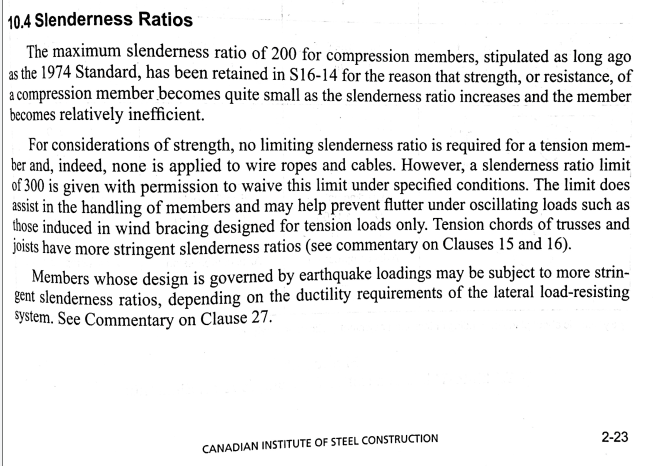Forgot2Yield
Industrial
Hi all,
I am a little confused about these slenderness recommendations. I am wondering why in the Canadian code it actually specifies the Slenderness ratio (including the effective length factor) to be KL/r < 300 whereas in the US code is recommends just L/r <300.
From my understanding the tension slenderness ratio is just to limit the Deflection during handling of the member in the fab shops BEFORE it has been incorporated into the structure, which is, from what I understood, is the US code it does not include the K value.
Does anyone have any insight into this and why the Canadian code would be including the K value, but the American code is not?
I am a little confused about these slenderness recommendations. I am wondering why in the Canadian code it actually specifies the Slenderness ratio (including the effective length factor) to be KL/r < 300 whereas in the US code is recommends just L/r <300.
From my understanding the tension slenderness ratio is just to limit the Deflection during handling of the member in the fab shops BEFORE it has been incorporated into the structure, which is, from what I understood, is the US code it does not include the K value.
Does anyone have any insight into this and why the Canadian code would be including the K value, but the American code is not?



